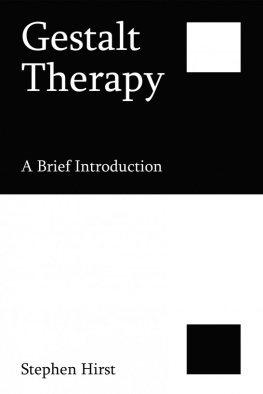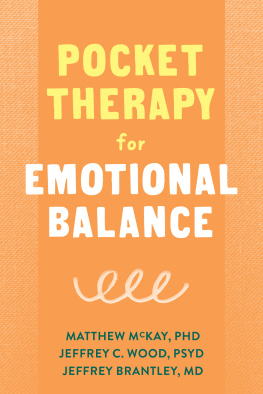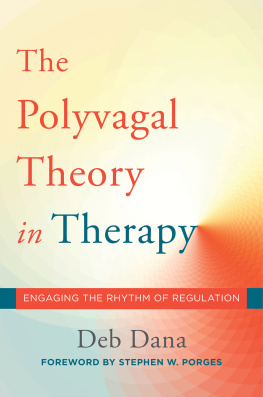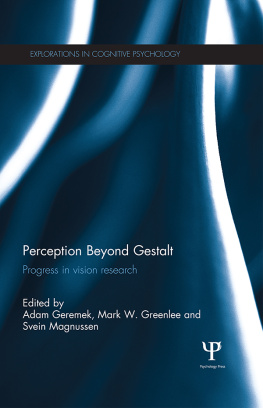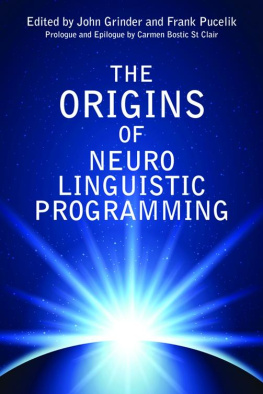Gestalt Therapy: ABrief Introduction
By Stephen Hirst
Copyright 2015 StephenHirst
Smashwords EditionLicense Notes
This ebook is licensedfor your personal enjoyment only. This ebook may not be re-sold orgiven away to other people. If you would like to share this bookwith another person, please purchase an additional copy for eachrecipient. If youre reading this book and did not purchase it, orit was not purchased for your enjoyment only, then please return toSmashwords.com or your favourite retailer and purchase your owncopy. Thank you for respecting the hard work of this author.
Tableof Contents
Introduction
Gestalt therapywas originally developed by Frederick Perls, better known as Fritz,in reaction to Freud's psychoanalytic theory. Classical Freudianpsychoanalysis focused on the transference phenomenon and theinterpretations of the analyst concerning their observations of theclients transferential process. Transference refers to theunconscious playing out of past unresolved issues, commonlystemming from early childhood, in current interpersonal situations.In clinical practice the Freudian psychoanalyst purposefullywithheld any expression of self in order to encourage aclient-therapist relationship based explicitly on transference. Byanalysing the transference the unconscious could be madeconscious.
However, Perlscriticised psychoanalysis for its overemphasis on the role oftransference and the past. In Gestalt therapy, he emphasised theneed for co-operative dialogue, and popularised the notion of ahorizontal relationship between client and therapist. More than anyof his contemporaries Perls widened interest in the existentialphenomenological concept of the here and now which he believedpromoted healing through contact between the client and therapist.Perls did not deny that everything has its origins in the past, butinsisted that the only psychological reality is in the present:awareness is the experience of right now.
Given Freudsinfluence on Perls, this brief introduction to Gestalt therapystarts by considering the relationship between Gestalt therapy andFreudian psychoanalysis with particular reference to thephilosophy, therapeutic process and the notion of cure. The secondchapter, which provides a further in-depth exploration of thedifferences between Gestalt and psychoanalysis, examines thesomatisation of defence mechanisms from both approaches. The thirdchapter outlines the main theoretical concepts of Gestalt therapywith emphasis on developments by Perls contemporaries.
Chapter One: Gestalt Therapy andPsychoanalysis
As the founderof psychoanalysis, Sigmund Freud was one of the most importantfigures in the development of psychology, and had a major influenceon psychotherapy and counselling. Of the many psychotherapistsinfluenced by Freud, Perls adopted Freud's psycho-sexual stages ofdevelopment in infancy as the basis for much of his clinical work(). In fact, such was Freud's influence thatwhen Perls first published his book "Ego, Hunger and Aggression" itwas subtitled "A Revision of Freud's Theory and Method" but waslater changed to "The Beginning of Gestalt Therapy". Thedifferences between the Freudian psychoanalysis and Gestalt therapyare highlighted in the following discussion. Like all therapeuticapproaches both of these approaches are in a constant state ofrefinement, however the current discussion will be confined to theclassical approaches outlined by Freud and Pearls respectively.
All forms ofpsychotherapy are bounded in the cultural context in which theyexist, and therefore the view of human nature to which anyparticular approach adheres is largely a reflection of theprevailing societal beliefs (). Morespecifically, Freud's view of humanity was biologicallydeterministic: one where biological inherited drives determine allhuman behaviour, and where the interaction between irreducibledrives and the psycho-sexual development of the individual duringchildhood laid the foundations for the adult personality.
A major eventwhich provoked opposition to the bio-deterministic view of thehuman mind was the First World War. The war produced large numbersof British soldiers, including volunteers and members of the seniorranks, who were subject to mental breakdowns. It was intolerable toa patriotic nation that these men should be regarded in any senseas degenerate, and so environmental and psychological ideasrealised legitimacy in the mental health scene (.
Pearls wasgreatly influenced by existentialism and accordingly thedevelopment of Gestalt therapy was shaped by several basicexistential themes. Existentialism stressed that individuals areresponsible for their own existence and that it is they who mustdecide whether to change their life situation or allow it to remainunaltered. Perls believed that individuals act on their environmentby choosing what they do, what they feel and what they think. Thesedecisions make individuals responsible human beings. Choice,however, is a function of the present. This notion of ourresponsibility and freedom to choose who we make ourselves frommoment to moment has terrifying implications. Ultimately, eachindividual is alone and must enter and leave this life alone.Therefore a fundamental conflict of human existence is the tensionbetween the awareness of our mortality and the wish to continue toexist. maintained that most individuals tend to cling tothe past in order to justify their unwillingness to assumeresponsibility for the present. By remaining in the past they areable to blame others for their fate and so avoid the challenge ofrealising their full potential.
Phenomenological existentialism recognises that human beings havean urge to make meaning and therefore to construct meaning in theirlives. In fact the world has no universal meaning, but rather, ourexperience of the world is open to a range of possibleinterpretations, so that the meaning that each individualconstructs is unique to that individual. Phenomenology thereforeacknowledges the importance of the subjective interpretation aswell as the objective sensory experience in order for theindividual to reach an understanding of the experience itself( states that:
"Phenomenology is adiscipline that helps people stand aside from their usual way ofthinking so that they can tell the difference between what isactually being perceived and felt in the current situation and whatis residue from the past."
What isimportant is to become aware of the present behaviour andexperiences. Explaining current behaviour in terms of past eventsleads only to explanations, speculations and interpretations whichcover up or are removed from the original experience.
Anotherphenomenological feature of human existence is the social aspect ofour experience and behaviour. ).
Inpsychoanalytic theory, neurotic symptoms are the result ofintrapsychic conflict between instinctive sexual and aggressivedrives (i.e., the id) and the part of the personality responsiblefor regulating the gratification of internal needs with externalreality (i.e., the ego). Therefore, the goal of psychoanalytictherapy is to help the patient achieve a resolution of intrapsychicconflict by developing an understanding of the cause of theseconflicts and to help the patient deal with the conflicts in a moremature manner.
In theclassical Freudian psychoanalytic situation the patient is asked tolie on a couch, looking away from the analyst, and to verbalisewhatever thoughts, feelings, images come to mind. Seated behind thecouch, the analyst listens in an uncritical, non judgmentalfashion. The analyst excludes his person, values, and judgementsfrom the therapeutic interaction in order to encourage arelationship based explicitly on transference. The unconsciousmotivations become manifest in the transference relationship and byanalysing the transference the unconscious becomes conscious. Sincethe analytic situation is relatively uncontaminated by theintrusion of ordinary interpersonal relationships, the interactionof the components of the mind (i.e., the ego, id, and superego) maybe studied in a more objective way, making it possible todemonstrate to the patient what parts of his thoughts andbehaviours are determined by inner wishes, conflicts andfantasies.

